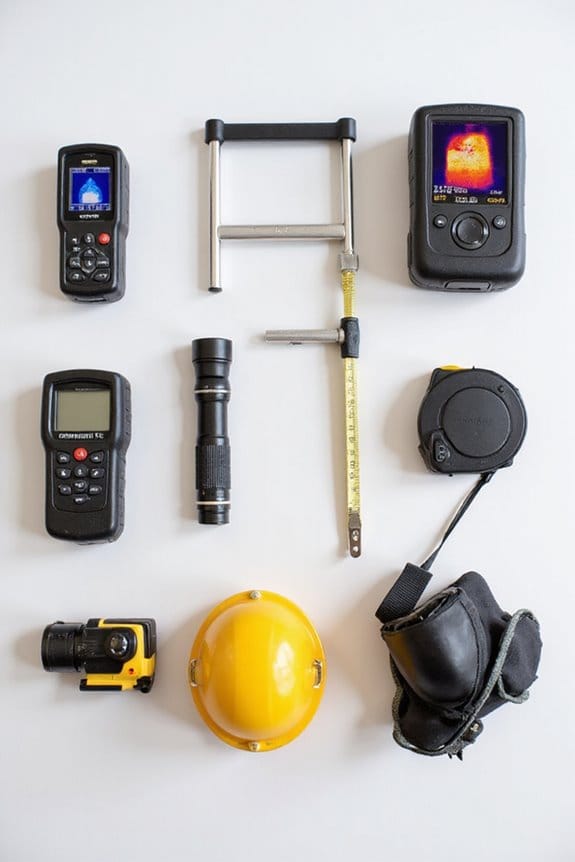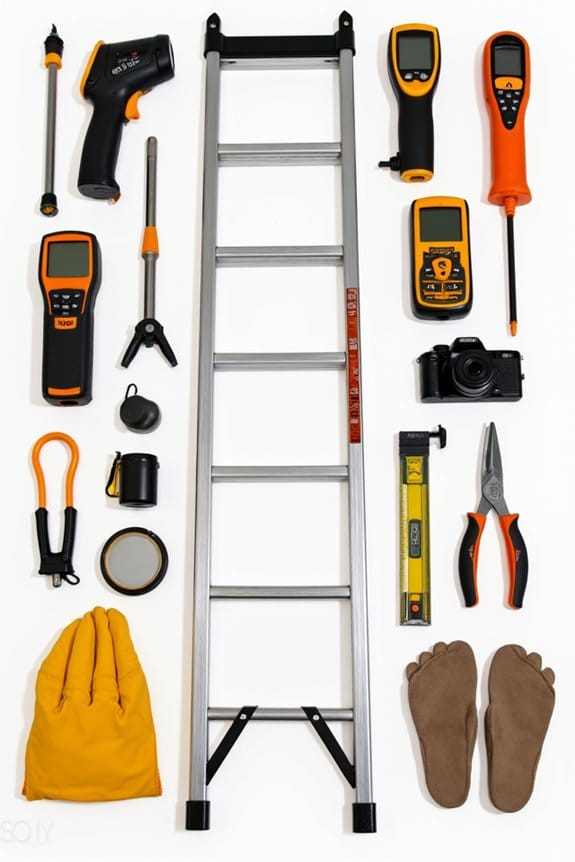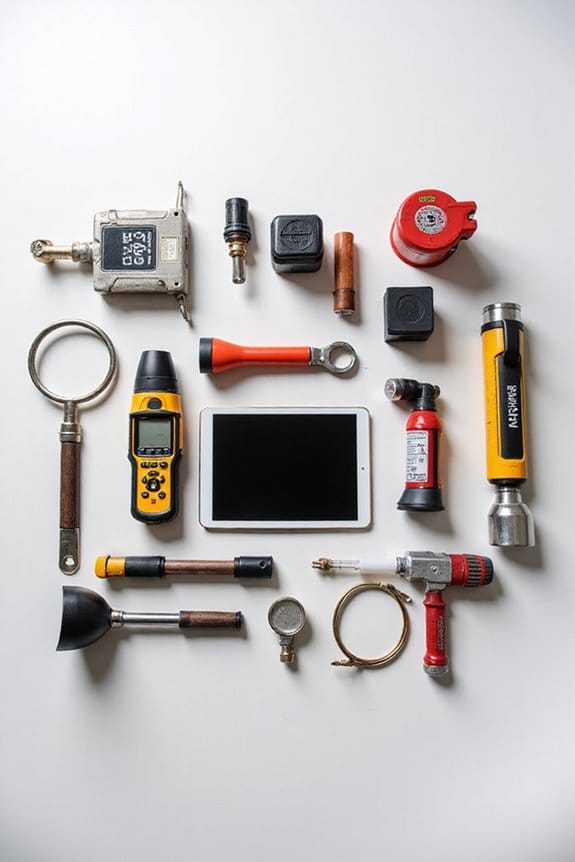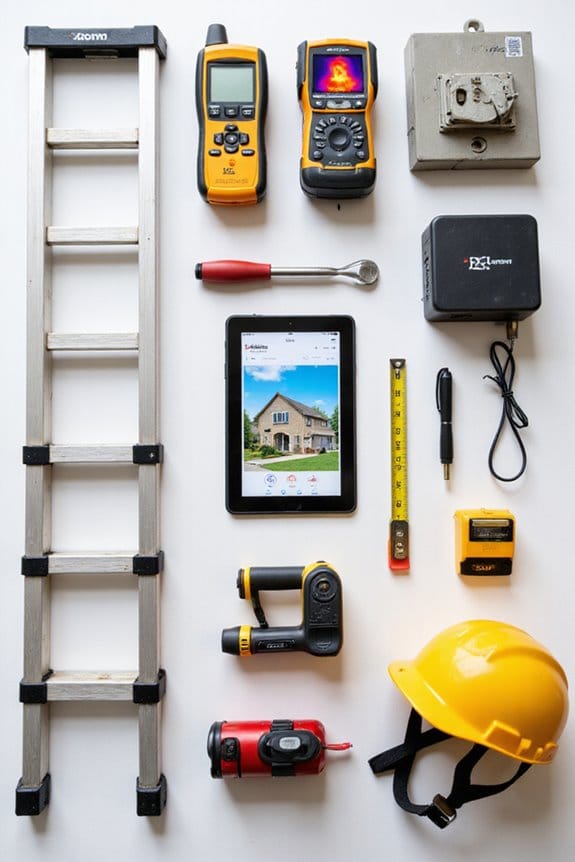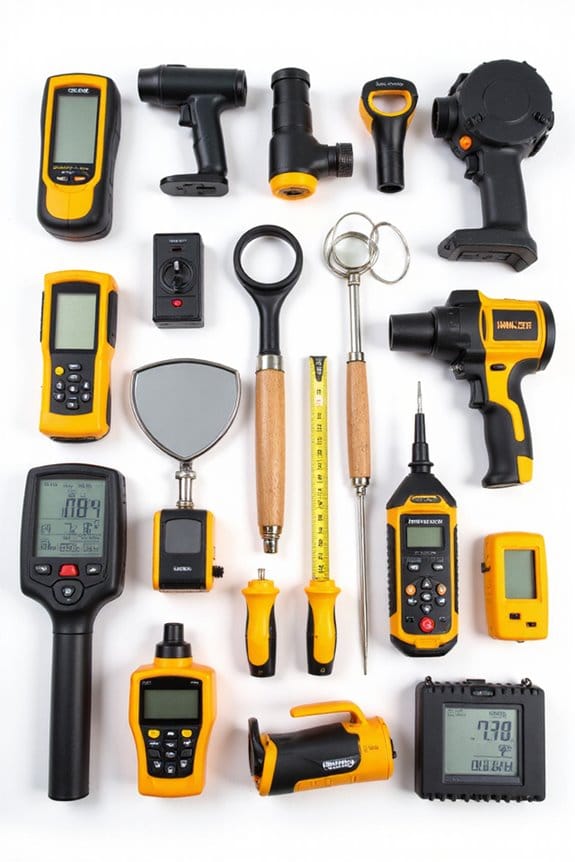When I think about what an inspection report should include, I break it down into key sections. First, there’s identification and general info like the property address. Then, I look at structural components—things like walls and roofs. Next, I check mechanical systems, ensuring everything operates smoothly. Safety and code compliance is essential too. Finally, I note observations and findings to summarize the property’s condition. Want to know what else I recommend? Stick around for more insights!
Key Takeaways
- Include owner and property details such as name, contact info, address, and property type for clear identification.
- Document structural components, noting any visible defects, stability issues, and overall condition for assessment.
- Assess mechanical systems, verifying installation, operational condition, and compliance with manufacturer guidelines.
- Ensure safety and code compliance by checking fire safety measures, electrical systems, and documenting any violations.
- Provide detailed observations and findings, including severity coding, photographs, and organized reports for clarity.
Identification and General Information

When it comes to inspections, getting the identification and general information right is essential. You wouldn’t want to mix up your neighbor’s house with your own, right? Here’s what I recommend including:
- Property Ownership: Note the owner’s full name and their contact info. This links responsibility directly.
- Inspection Timeline: Include the date of the inspection to keep everything organized.
- Property Address: A precise location guarantees we are aware of where we’re going.
- Description: Type of property—residential, commercial, or industrial—gives context.
- Unique Identifiers: Use property IDs or asset tags for easy record-keeping.
Getting these details right helps maintain clarity and accountability. After all, a well-documented inspection is the backbone of property evaluations!
Structural Components
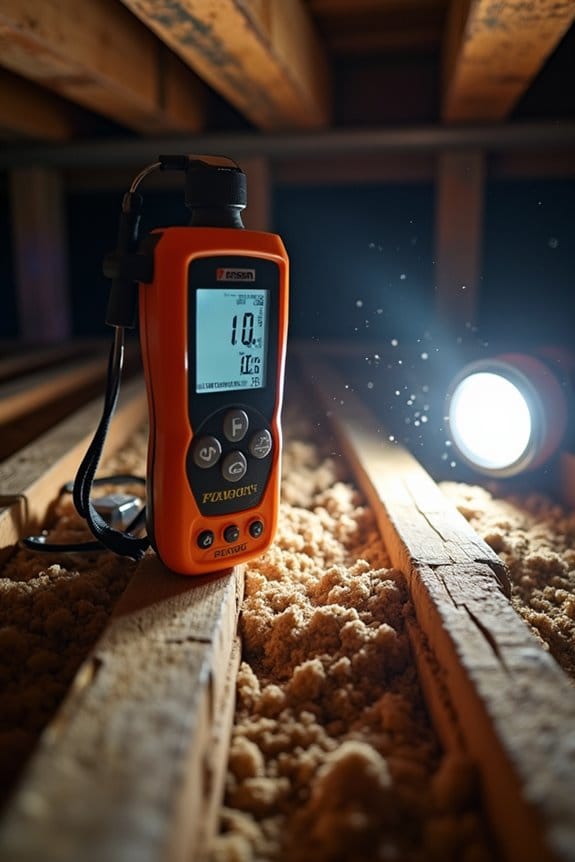
Structural components are the backbone of any property, and keeping an eye on them can save you a heap of trouble later on. Here’s what to focus on:
- Foundation Stability: Look for visible cracks or settling that could compromise stability. Water damage, like erosion or pooling, can be a red flag too.
- Walls and Cladding: Check for cracks or bulges in exterior walls, and inspect for moisture intrusion or deterioration in the cladding.
- Roof and Gutters: Confirm shingles are intact and gutters are clear to avoid leaks and water damage.
- Windows and Doors: Make sure everything opens and closes smoothly; cracked frames can hint at bigger issues.
- Basements and Crawl Spaces: Watch for dampness and structural support issues. Trust me, prevention is way easier than costly repairs!
Mechanical Systems
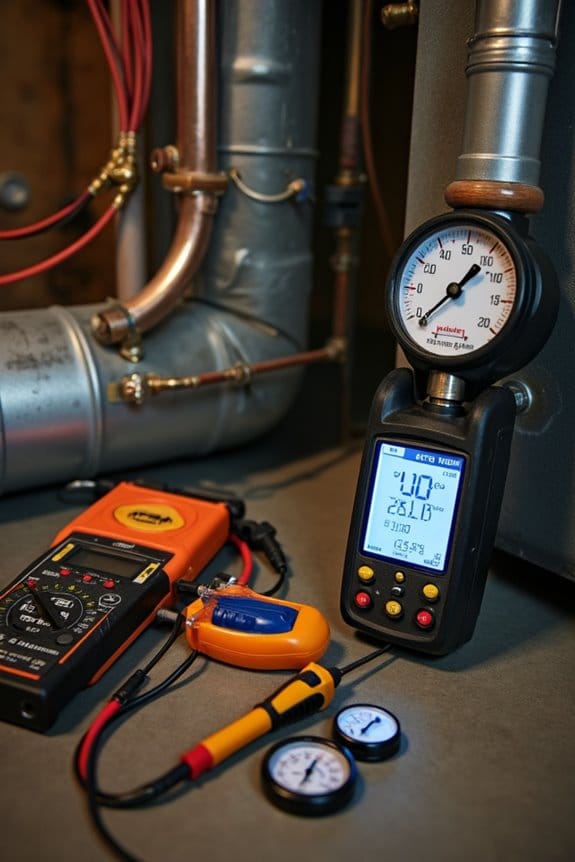
Mechanical systems are like the heart of any building, pumping life into the space and keeping everything running smoothly. When I inspect these systems, I focus on several key inspection criteria to guarantee peak system performance:
- Component Verification: I check that installation follows manufacturer guidelines and approved plans.
- Equipment Placement: I confirm that exterior units are installed correctly and securely.
- Electrical and Ventilation: I verify that electrical components are signed off and ventilation systems maintain proper airflow.
- Operational Condition: I inspect for wear and assess noise and vibrations to catch potential issues.
- Documentation: Finally, I keep detailed reports to track conditions and plan repairs.
Safety and Code Compliance
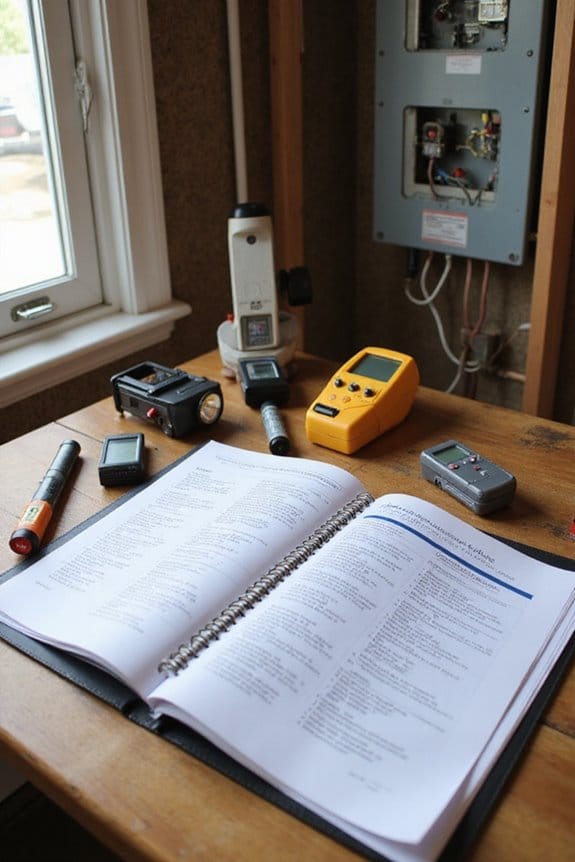
Safety and code compliance are essential aspects of any building’s integrity, ensuring that it not only stands the test of time but also protects its occupants. Here are a few key points to examine:
- Fire Safety: Check that fire alarms, sprinklers, and extinguishers are functional. Don’t forget to verify smoke detectors and emergency lighting!
- Electrical Safety: Inspect wiring and outlets for hazards. Exposed wires? That’s a no-go!
- Hazard Identification: Make sure flammable materials are stored correctly and that ventilation systems meet safety standards.
- Code Compliance: Document any violations clearly, including photographic evidence. It helps with enforcement and future inspections. Additionally, ensure that hardwired smoke detectors are installed properly to enhance fire safety measures.
Observations and Findings
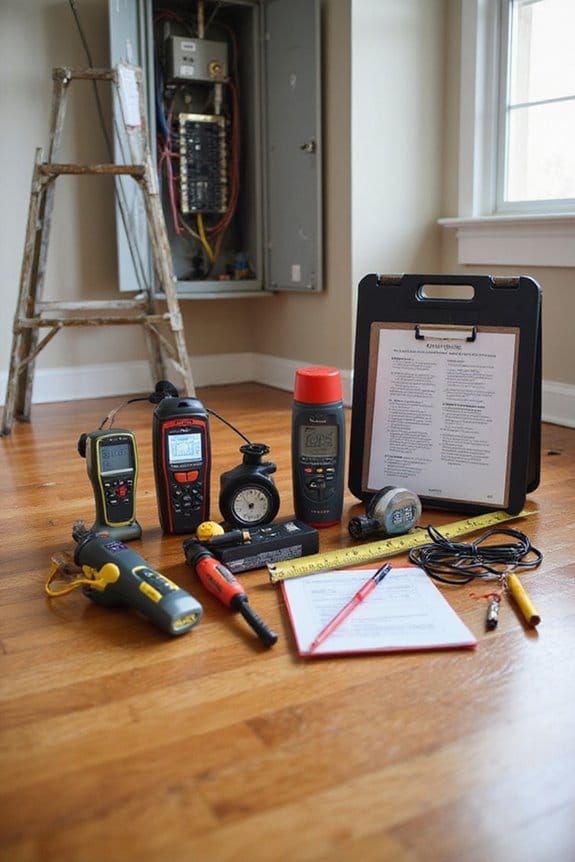
When you’re diving into the observations and findings of an inspection report, it’s like peeling back the layers of an onion—each layer reveals something important. Here’s what to expect:
- Detailed Observations: Each system and area should be clearly addressed. This means stating if something’s non-functional or unsafe.
- Severity Coding: You’ll see color-coded items. Red means urgent issues needing immediate attention, while orange indicates things to watch closely.
- Photographs: Visuals help! Including images with captions supports your findings.
- Organization: Findings are grouped logically, making it easier to follow.
- Testing Equipment: Utilizing proper electrical testing tools ensures that observations are based on accurate measurements and enhances the reliability of your findings.
Recommendations and Summary
While it might seem tedious to sift through a list of recommendations after an inspection, trust me, these insights are invaluable for keeping your property in tip-top shape. Here’s what I recommend for making the most of your report:
- Recommendation Clarity: Each point should avoid vague terms. Specify who needs to handle repairs—like a plumber or electrician—so there’s no confusion.
- Prioritize Actions: Focus on the most urgent issues first. This helps you tackle critical problems without feeling overwhelmed.
- Structured Summary: Use bullet points to highlight key findings and safety concerns. This makes it easier to digest.
When recommendations are clear, and summaries are effective, you’ll feel empowered to take action and protect your investment. Additionally, consider incorporating professional monitoring options to enhance security and peace of mind for your property.
Age and Condition of Major Systems
Understanding the age and condition of major systems in your home can save you time, money, and a whole lot of headaches down the road. Here’s what you should keep in mind:
- Roof Lifespan: Know the age of your roof; asphalt shingles usually last 20-30 years. Check for damage or leaks that might shorten this lifespan.
- HVAC Systems: Older systems can be less efficient. Keep an eye out for odd noises or performance issues.
- Electrical Systems: Inspect service panels and wiring for safety. Older homes might not meet modern standards.
- Plumbing: Evaluate pipes and fixtures for leaks or corrosion. Old materials could cause future headaches.
Notable Defects and Repairs Needed
Noticing notable defects in your home can feel overwhelming, but it’s essential for your peace of mind and safety. In an inspection report, defect categorization is key. Here’s what to look for:
- Major Defects: These need immediate attention, like leaking roofs or faulty wiring. Don’t wait on these!
- Minor Defects: Less critical issues, such as dripping faucets, still need fixing but aren’t urgent.
- Maintenance Items: Routine tasks that help avoid future problems, like cleaning gutters.
When it comes to repair prioritization, focus on those major defects first. They can greatly impact your home’s safety and value. Additionally, using multi-function tools can streamline the repair process and ensure that you have the right equipment for tackling various tasks. Remember, being proactive now saves you time, money, and stress later—trust me, you don’t want to be dealing with a waterfall in your living room!
Safety Hazards and Compliance Issues
After addressing those notable defects in your home, it’s time to turn our attention to safety hazards and compliance issues. A thorough safety audit can reveal potential risks. Here are key areas to focus on:
- Physical Hazards: Check for dry floors and secure stair treads. Proper lighting is essential.
- Fire Safety: Test alarms and maintain fire extinguishers. Don’t forget to post evacuation plans! Regular testing of fire alarms is crucial for maintaining functionality and safety.
- Chemical Handling: Keep an inventory of hazardous materials and guarantee proper ventilation.
- Biological Hazards: Maintain clean restrooms and pest control measures.
- Ergonomics: Confirm workstations are set up to prevent strain.
Overall Property Assessment and Value Impact
Evaluating a property’s overall condition is essential for understanding its true value. Here’s what to take into account:
- Physical Components: Check walls, roofs, and foundations for defects. These issues can seriously impact value.
- Systems Assessment: Look at HVAC, plumbing, and electrical systems. Their age and condition influence ongoing costs and buyer expectations.
- Cosmetic vs. Structural: Differentiate between cosmetic flaws and major defects. Cosmetic issues might be minor, but structural ones can scare buyers away.
- Market Trends: Stay informed on market trends. Buyers today are savvy and want properties that won’t drain their wallets on repairs.
Frequently Asked Questions
How Often Should I Get a Property Inspection?
I recommend scheduling property inspections based on your property’s age. For newer homes, every 3-5 years is ideal, while older properties benefit from more frequent inspections, about every 2 years, for effective property maintenance.
What Is the Cost of a Typical Inspection?
Did you know the average home inspection costs between $300 and $500? When considering inspection pricing, keep in mind that larger homes or additional services can greatly increase these average costs, sometimes adding hundreds more.
Can I Attend the Inspection?
Yes, you can usually attend the inspection. I recommend confirming your inspection rights with the company. Your presence as the buyer lets you ask questions and observe issues firsthand, enhancing your understanding of the property.
Are Inspection Reports Legally Binding?
Inspection reports aren’t legally binding on their own; they support contract contingencies. I’ve learned that their validity relies on mutual agreement between buyer and seller, emphasizing the need for clear communication regarding legal implications.
What if Issues Are Found After Purchase?
Well, if issues pop up after purchase, I’ve learned it’s essential to act fast. Understanding post-purchase remedies is key, but ultimately, it’s the buyer’s responsibility to address problems with sellers or seek professional advice.

